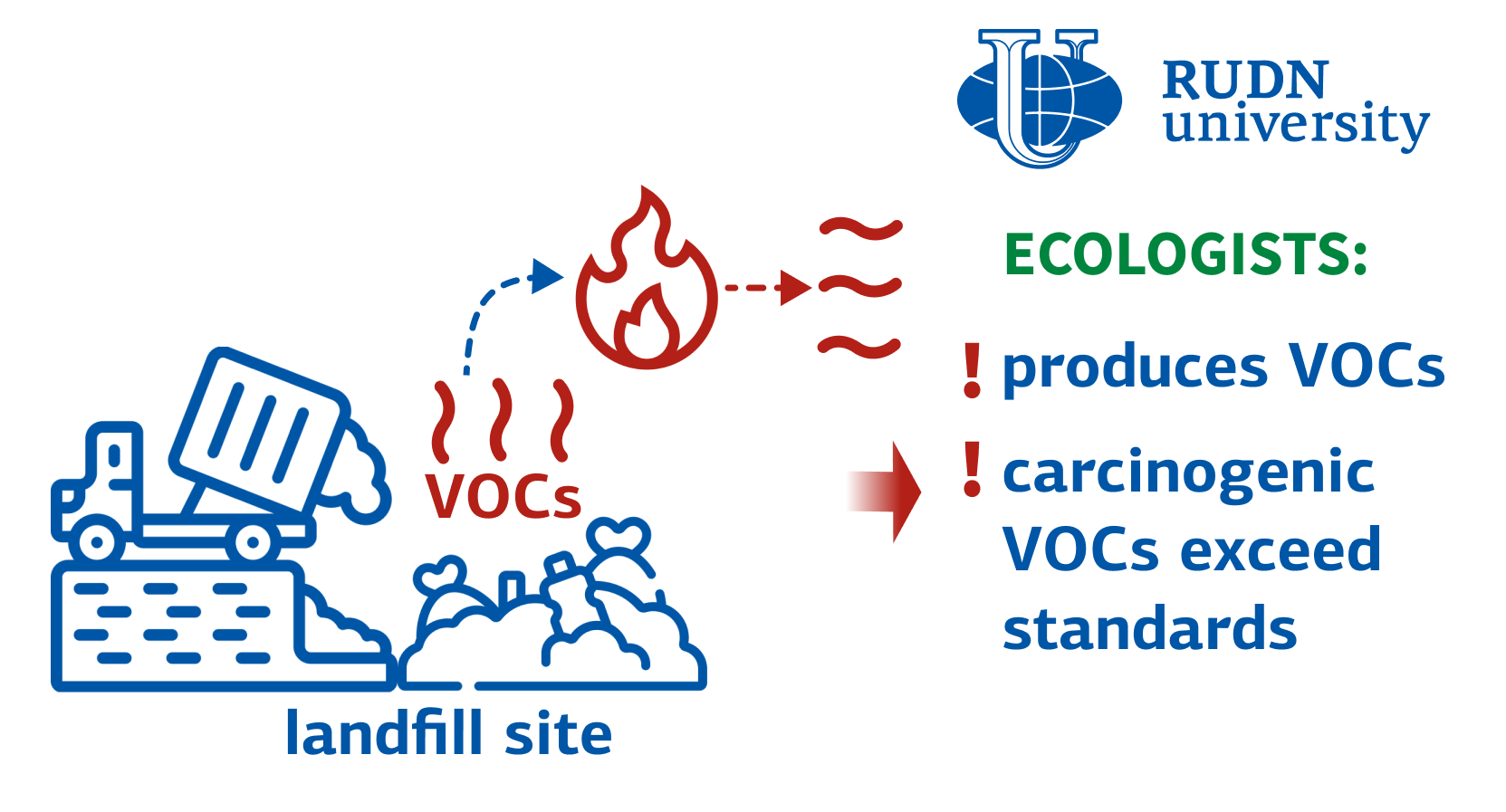RUDN University ecologists and a professor from the Jordan University of Science and Technology (JUST) have shown that the combustion of landfill gas in flares continues to pose a danger to the health of the environment and humans. Moreover, it is likely that the situation only gets worse after flaring. The results were published in Atmospheric Pollution Research.
Household waste sites and landfills have a noticeable negative impact on the environment and human health. Organic waste that decomposes in landfills produces so-called landfill gas, which is often burned using flares to minimize the impact of methane on the climate. This is considered to be an effective and cost-effective solution. RUDN University ecologists, together with leading world-class professor Hani Abu-Qdais, measured the content of volatile organic compounds in the landfill and in residential areas and showed that flares for burning landfill gas do not improve the situation for human health.
“Without proper management, landfills harm health and the environment. This is especially true for Russia, where until recently 87% of generated solid waste was disposed of in landfills. Volatile organic compounds are a special class of pollutants. They are potentially dangerous to landfill workers and the public as carcinogens. Exposure to them, even in extremely low concentrations, can cause cancer. In addition, an unpleasant odor remains a big problem,” Anna Kurbatova, PhD, Associate Professor of the Department of Environmental Safety and Product Quality Management of RUDN University said.
The study was carried out using the example of the Kuchino test site near Moscow. The landfill was closed in 2017, and the site is now undergoing reclamation. The gases formed in the depth of the landfill body are being flared. The authors measured VOCs before flaring in the landfill itself and after flaring in adjacent residential areas. Measurements were carried out four times in 2020 – in winter, spring, summer, and autumn.
Environmentalists found 30 volatile organic compounds at the landfill. 20 VOCs were found in a nearby residential area after burning. The risk assessment found that landfill workers were exposed to high carcinogenic and non-carcinogenic risks. The main contribution in both cases (more than 60%) comes from carbon tetrachloride, a toxic organochlorine compound that smells like chloroform. For residents of nearby areas, non-carcinogenic substances are within normal limits, but carcinogenic VOCs exceed acceptable limits. Chloroform turned out to be the main source of carcinogenic risk (80%).
“Our findings highlight the need for urgent action to mitigate the impact to protect the health of workers and residents. Flaring does not magically solve the problem of VOC emissions. Rather, on the contrary, it leads to the formation of extremely toxic VOCs,” Anna Kurbatova, PhD, Associate Professor of the Department of Environmental Safety and Product Quality Management of RUDN University said.
